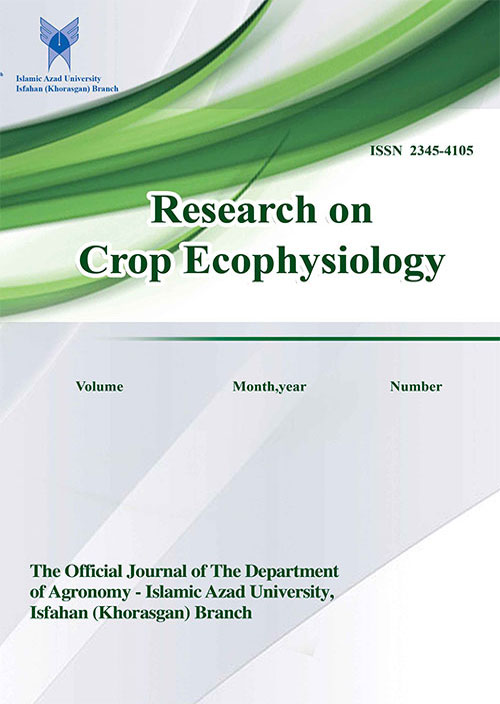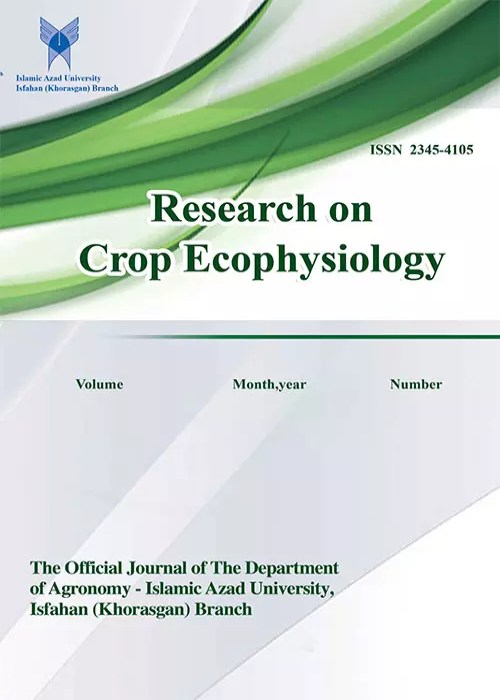فهرست مطالب

Journal of Research on Crop Ecophysiology
Volume:14 Issue: 2, Spring 2019
- تاریخ انتشار: 1401/05/15
- تعداد عناوین: 6
-
Pages 66-75
Natural products have played a key role in drug discovery and development in modern days. Sulforaphane can be found in a wide variety of cruciferous vegetables, including cabbage, Brussels sprouts, cauliflower, broccoli, Chinese broccoli, broccoli sprouts, broccoli raab, Kohlrabi, collards, kohlrabi, mustard, turnip, kale and radish. The most important health benefits of sulforaphane is its effects again breast cancer, lung cancer cells, human liver cancer cells, gastric cancer cell lines, ovarian cancer, prostate cancer, pancreatic cancer, colon cells cancer, treatment of cancer cell senescence, anti-inflammatory properties, antineoplastic agent, reduction of placental and endothelial oxidative stress, potential in mixed granulocyte asthma, treatment of various neurological disorders, protection again skeletal muscle disease, anti-allergic and its impact against oxidative stress.
Keywords: Natural Compounds, Sulforaphane, Health Benefits, cancer -
Pages 76-84
Common bean is a product cultivated in Chaharmahal and Bakhtiari province with high water consumption and in recent years, due to water scarcity, its cultivation has declined sharply. In this experiment, different methods of reducing water use with changing in irrigation method in bean cultivars was investigated. Factorial experiment was conducted in a randomized complete block design with three replications 2016 and 2017 at Chahartakhte Research Station in Shahrekord region. The first factor was cultivar in three levels (Koosha chitti bean, Yaghut red bean and Dorsa white bean), and the second factor was the irrigation method in three levels (strip-drip irrigation, furrow irrigation, and conventional (flood) irrigation (strip surface irrigation)). Combined analysis results showed that plant height, grain yield, yield components, and water productivity were affected by bean cultivars and irrigation methods. The highest grain yield was obtained from Yaghut red bean cultivar, which had a significant difference with Koosha chitti bean cultivar. The highest water productivity was obtained from Yaghut red bean cultivar, which had a significant difference with other common bean cultivars. The highest water productivity was obtained from strip surface irrigation, which did not have a significant difference with strip drip irrigation, while water use in strip drip irrigation was far less than strip surface irrigation. Therefore, it is possible to use drip irrigation with less water consumption.
Keywords: Common bean, Yield, Reduce irrigation, water productivity -
Pages 86-103
In order to investigate the effects of pretreatments on dormancy and seedling germination of two caper populations, a laboratory experiment was conducted (2019-2020) in Islamic Azad University (Isfahan Branch). The study was performed as a split factorial experiment in a completely randomized design. Main plot consisted of different leaching levels (soaking in distilled water for 0, 6, 12, 18 and 24 hours) and subplots included factorial of two seed populationes (Najafabad, Izeh) and nine levels of hormone or chemical treatments (gibberellic acid (100 mg/l), benzyl adenine 6 (10-5 M), kinetin (10-5 M), gibberellic acid+ benzyl adenine, Gibberellic acid+ kinetin, benzyl adenine+ kinetin, gibberellic acid+ benzyl adenine+ kinetin, potassium nitrate 0.4%, distilled water as control). According to the results, 18 hours leaching of Najafabad population plus gibberellic acid +kinetin and 24 hours leaching of Najafabad population with benzyl adenine showed the highest germination uniformity. The highest germination percentage was observed in 24 hour leaching of Izeh population plus gibberellic acid+ benzyl adenine+ kinetin and also 24-hour leaching of Izeh population plus gibberellic acid+ benzyl adenine. 12 hours leaching of Izeh population plus gibberellic acid+ benzyl adenine+ kinetin showed the highest germination time and seed vigor index. The highest germination rate was belonging to Najafabad population without leaching plus kinetin and also 6 hours plus kinetin. On the whole, 18 and 24 hours of leaching plus gibberellic acid and kinetin alone or in combination seem to be suitable to break the seed dormancy.
Keywords: Leaching, Benzyl Adenine, Gibberellin, Kinetin, seed vigor index -
Pages 104-110
Fusarium oxysporum is a major wilt pathogen of many economically important crop plants. Four melon genotypes (Isabelle, Ogon9, NBD-929 and NBD-943) were screened for resistance to Fusarium oxysporum f.sp. melonis race 1 and 1. 2 using artificial inoculation procedure. The experiment was conducted in the 2019 cropping season in the research greenhouse of the Islamic Azad University, Khorasgan Branch. The analysis of variance showed significant differences within genotypes, Fusarium spp pathotype and days after inoculation, and their interactions. Isabelle, Ogon9 and NBD-929 had a good performance when inoculated with race 1 and therefore classified as resistance. The line NBD-943 showed more sever susceptibility to race1 comparing to other genotypes. All of evaluated genotypes were susceptible to race 1.2. Finally, the line NBD-929 was considered as a novel and suitable candidate for future resistance to Fusarium race1 in breeding projects of melon.
Keywords: Cucumis melo L. Fusarium spp. Disease resistance -
Pages 111-118
Development of cultivation and sustainable production of sunflower is one of the important issues in agriculture. In this research, effect of conservation tillage on energy consumption and sunflower yield in Kalpoush dryland region of Shahrood was studied. An experimental design RCBD with five replications and four treatments selected. The treatments were no-tillage (T1), reduced tillage (T2) and two conventional tillage without and with gathering residue (T3 and T4). Results showed that at the 0-30cm of Soil depth, moisture content difference was significant. Sunflower yield difference was significant (P<1%). Maximum and minimum of sunflower yield was related to reduced tillage and conventional tillage with gathering residue, respectively. Between no-tillage and reduced tillage, Sunflower yield difference wasn't significant (P<5%). Reduced and conventional tillage with gathering residue (T2 and T4), had the maximum and minimum of energy efficiency and energy productivity, respectively. Regarding to conservation tillage advantages (soil moisture maintaining and energy saving), for sunflower production (dryland), it may be recommended that, plowing can be replaced by conservation tillage (chisel-packer or no-tillage). Application of conservation tillage for sunflower production compared with moldboard plough, in addition to increase of crop yield, increased energy productivity.
Keywords: Energy, Soil moisture content, Tillage, Sunflower yield -
Pages 119-125
Cucumber is considered the forth-important greenhouse vegetable after tomato, cabbage and onion. Nineteen hybrids of cucumbers along with two check were test at the Islamic Azad University research greenhouse at Khorasgan branch (Isfahan) Iran. Genetic variability and selection of superior hybrid were evaluated using PCA analysis and bi-plot. The results of analysis of variance indicated a high significant difference among hybrids for most of traits. The highest significant correlation was observed for late fruit number with late fruit weight. There is non-significant correlation between fruit diameter and length in evaluated hybrids which could be due to parthenocarpy in these varieties of cucumber. The principal component analysis had grouped the estimated cucumber variables into four main components. The traits, which contributed more positively to PC1 were mid and late fruit number and weight. In PC2 highest positives were recorded for fruit number per node. Based on biplot analysis the hybrids 402, 202 and 212 had a high mid and late fruit number and weight, and also a higher fruit diameter than other hybrids and the second group, had a high mid and late fruit number and weight, while the fruit diameter in these hybrids was low, thus the hybrids 302, 209, 203, 401, 201, and 208 had elongated and thinner fruits. The early and late fruit weight had the same trend in most hybrids and the difference among the hybrids was clear in the middle of the growing season. Therefore, the selection of hybrids with better performance is not related to their fruiting time, and this increases the accuracy of selection. In conclusion, PCA analysis can grouped hybrids and selected genotypes with suitable performance for future experiments.


